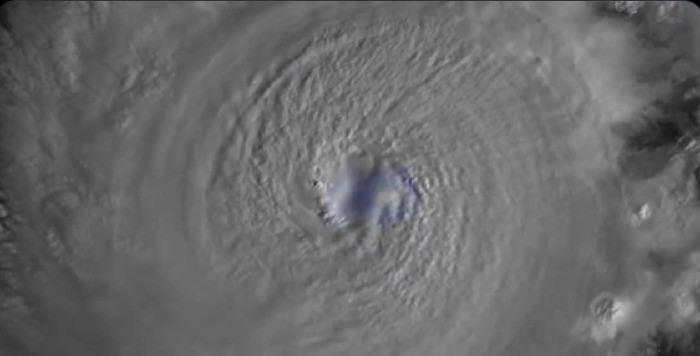
Hurricane Milton rapidly intensified into a Category 5 storm on Monday night, raising questions about how strong it could become. The National Hurricane Center reported sustained winds reaching 180 mph, pushing Milton towards what meteorologists refer to as Maximum Potential Intensity (MPI), which is estimated at around 195 mph with an atmospheric pressure near 900 MB. By early Tuesday, on its path to Florida, the hurricane weakened to Category 4.
The Gulf of Mexico, warmed by record-high temperatures, has provided a conducive environment for Milton's growth, with little interference from land.
Tomer Burg, a researcher with the National Weather Service's Weather Prediction Center, emphasized the importance of considering MPI in forecasting Milton's trajectory, as reported by the Miami Herald.
Experts noted the hurricane's explosive development, as it transformed from a tropical storm with 60 mph winds on Sunday morning to a Category 4 storm with 150 mph winds, and subsequently a Category 5. Satellite images confirmed its intense structure, featuring a compact, pinhole eye. In terms of barometric pressure. The only Gulf storm with higher recorded wind speeds was Hurricane Wilma in 2005, which peaked at 185 mph before weakening.
Furthermore, forecasters are hoping that wind shear closer to Florida will help weaken Milton before landfall, possibly reducing it to a Category 3.
Milton's rapid strengthening can be attributed to its relatively small size, allowing for swift intensification. As it moves across the Gulf, it is expected to do so quickly, limiting its time over the warm surface waters. One significant factor that could impact Milton's intensity is an eyewall replacement cycle, during which a larger secondary eye forms, temporarily reducing wind speeds while expanding the storm's wind field.
Climate change plays a role in the potential upper limits for storms, as rising sea surface temperatures can lead to stronger hurricanes. The latest report from the Intergovernmental Panel on Climate Change indicates a high confidence among researchers that peak wind speeds for the strongest storms will increase with global warming.
While the number of storms may decrease, the intensity of those that do form is expected to rise. Historical records show that significant hurricanes have impacted the continental U.S., with Hurricane Patricia in 2015 recording the highest sustained winds of any hurricane, reaching 215 mph.
© 2025 Latin Times. All rights reserved. Do not reproduce without permission.


